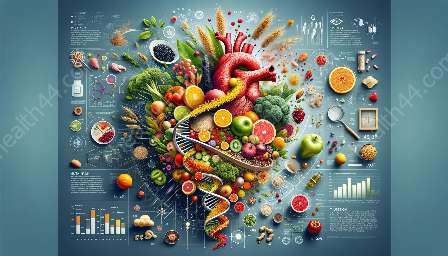In today’s modern world, an overabundance of processed and unhealthy food options bombards us from every direction. With the rise of fast food outlets, seductive packaging, and ads targeting children, it's no wonder that obesity rates are skyrocketing. This article will dive deep into the relationship between food marketing, advertising, and obesity rates, examining their influences on weight management and nutrition.
Understanding Food Marketing and Advertising
Food marketing and advertising refers to the promotion and publicizing of food products and brands to consumers. It is a multi-billion-dollar industry that utilizes various channels, including television, social media, billboards, and product placements, to create brand awareness and influence consumer behavior. The primary goal of food marketing is to increase product sales and profitability, often by appealing to consumers’ desires and emotions.
One of the most significant impacts of food marketing and advertising is the constant exposure to unhealthy, high-calorie, and processed food options. Advertisements often depict these foods as desirable, convenient, and affordable, leading to increased consumption. Additionally, the targeting of children through colorful and captivating ads further contributes to unhealthy eating habits from a young age.
Linking Food Marketing to Obesity
Research has shown that heavy exposure to food marketing and advertising, especially for sugary drinks, fast food, and snacks, is associated with poor dietary choices and increased calorie intake. The constant bombardment of persuasive messages and images can influence individuals’ food preferences, leading to a higher consumption of calorie-dense, low-nutrient foods. This overconsumption, in turn, contributes to weight gain and, in many cases, obesity.
Furthermore, food marketing tactics often exploit vulnerabilities in consumer behavior, leading to overeating and poor food choices. For instance, the ubiquitous nature of food advertisements can trigger impulsive eating behaviors and cravings, especially in environments where unhealthy food options are readily available.
The Role of Advertising in Obesity Rates
Food advertisements play a crucial role in shaping consumer perceptions of food and nutrition. Misleading health claims, exaggerated product benefits, and deceptive packaging tactics can create a false sense of nutrition and wellness. This can lead to the consumption of seemingly healthy products that are actually high in unhealthy fats, sugars, and additives, contributing to weight gain and obesity.
Moreover, the glamorization of oversized portions and super-sized meals in advertising contributes to the normalization of overeating. Portraying excessive food consumption as desirable and enjoyable can distort individuals’ perceptions of appropriate portion sizes, leading to an overconsumption of calories and subsequent weight gain.
Implications for Obesity and Weight Management
The impact of food marketing and advertising on obesity rates has far-reaching implications for weight management. The constant exposure to enticing food promotions can lead to increased cravings, overeating, and reduced self-control, hindering individuals’ efforts to manage their weight effectively. Additionally, the association between food marketing and the consumption of high-calorie, low-nutrient foods creates challenges for individuals seeking to adopt healthier eating habits.
Moreover, the pervasive nature of food marketing and advertising can undermine individuals’ motivation to engage in physical activity and make healthier food choices. The subtle and overt messaging in food advertisements can promote a sedentary lifestyle and discourage the consumption of nutritious, whole foods, further complicating efforts to combat obesity and maintain a healthy weight.
Addressing the Nutrition Aspect
Nutrition plays a critical role in the complex relationship between food marketing, advertising, and obesity rates. The marketing of nutritionally deficient products, coupled with misleading health claims and packaging, can lead to a decline in overall dietary quality. As individuals become more susceptible to the allure of processed and unhealthy foods, their nutritional intake may lack essential vitamins, minerals, and fiber, contributing to weight-related health issues.
Furthermore, the influence of food marketing and advertising on nutrition can perpetuate a cycle of poor dietary habits, leading to imbalanced energy intake, nutrient deficiencies, and subsequent weight problems. The misleading portrayal of certain food products as nutritious choices can thwart individuals’ efforts to achieve a well-balanced and wholesome diet, exacerbating the obesity epidemic.
Conclusion
The interplay between food marketing, advertising, obesity rates, weight management, and nutrition is indisputable. The pervasive influence of food promotions on consumer behavior, dietary patterns, and perceptions of nutrition underscores the need for comprehensive strategies to address the root causes of rising obesity rates. Awareness, education, and regulation are essential components in mitigating the adverse effects of food marketing and advertising on individuals’ health and well-being.


